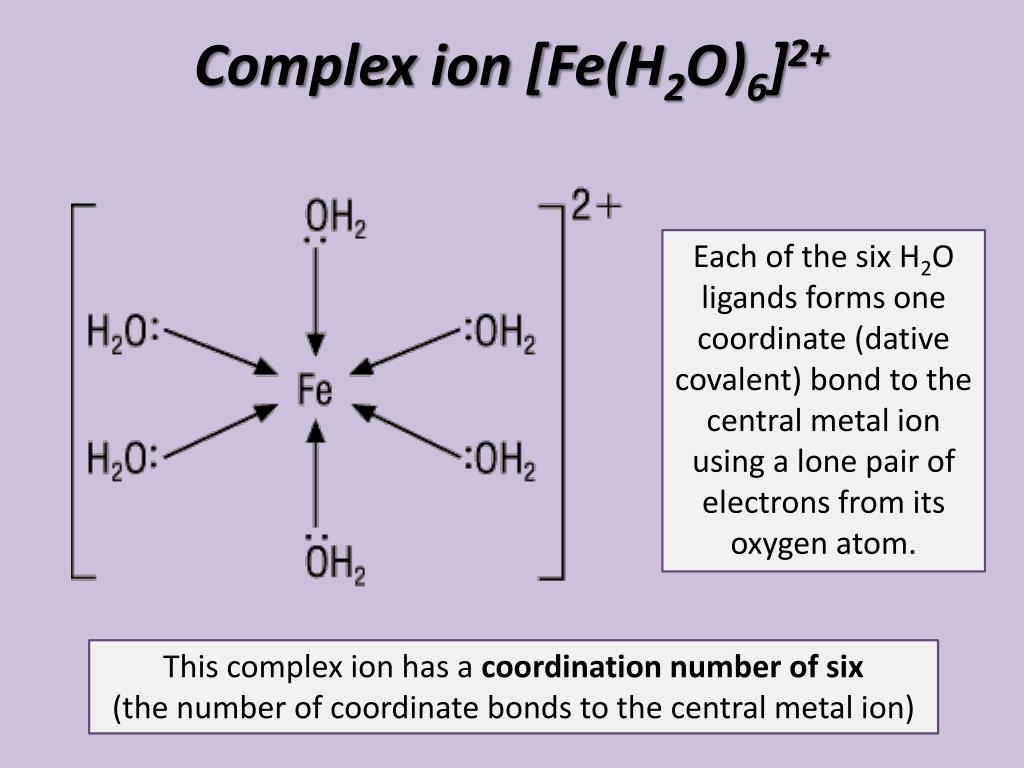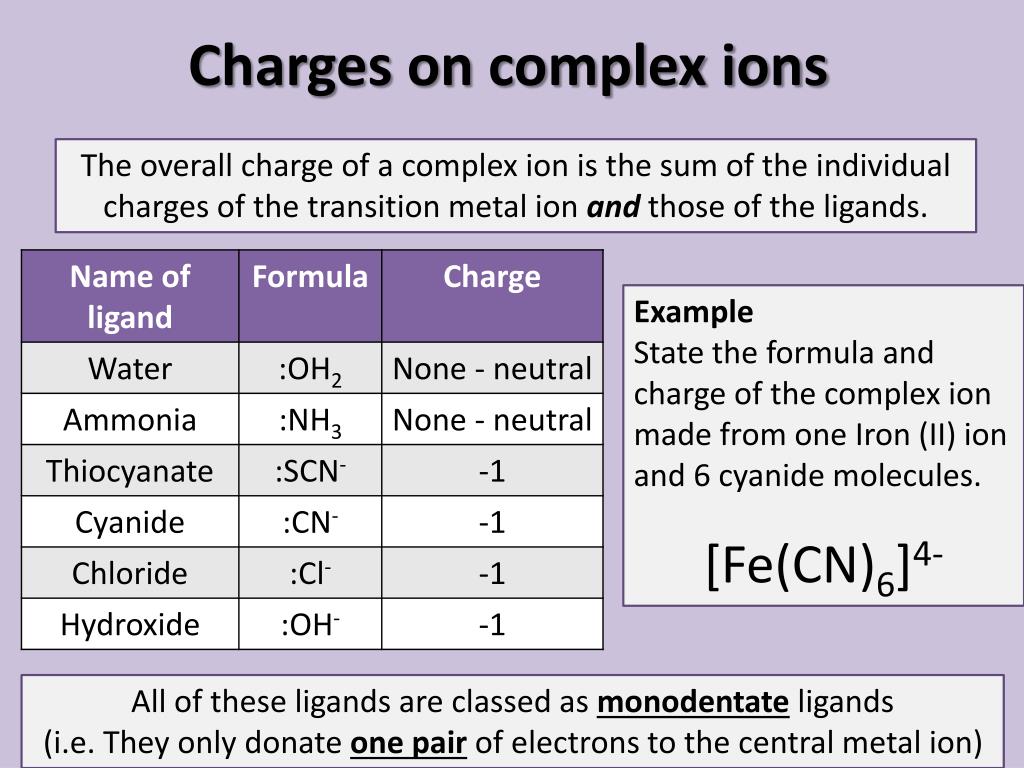

Some of the more important complex ions are vitamin B 12, chlorophyll, and the heme component of hemoglobin, in which the central metal ions are cobalt, magnesium, and iron, respectively, and the ligands are complex organic systems. For example, when cobaltous chloride is dissolved in water, a pale pink solution, sometimes called invisible ink, results because of the presence of the hydrated cobaltous ion, Co(H 2O) 6 +2 this solution does not show up well on paper, but if the paper is heated to drive the water off, visibility improves because of the formation of a blue tetrachlorocobalt (II) -2 complex.

Many complex ions are colored the specific color of a complex depends on both the central atom or ion and the ligands. When there are four or more ligands around a central atom, different stereoisomers, or spatial configurations, are possible (see stereochemistry). Because ligands remain in a fixed position around a central atom or ion, in many complexes different isomers, or arrangements, of the ligand groups are possible. All the ligands surrounding the central ion need not be the same, and some positions can be occupied by solvent molecules. The bonding holding the ligands to the central atom or ion is similar to covalent bonding between atoms but is more complex (see chemical bond). Transition metals (see transition elements) are especially suited for forming complex ions because they have filled or partially filled electron orbitals that can participate in bonding the ligands to the metal.

Start by thinking about the structure of a naked aluminium ion before the water molecules bond to it. counterions anions or cations as needed to produce a compound with no overall net charge. Al(H 2 O) 6 3+ We are going to look in detail at the bonding in the complex ion formed when water molecules attach themselves to an aluminium ion to give Al(H 2 O) 6 3+. The number of bonds connecting the ligands to the central atom or ion is its coordination number, or ligancy. complex ion transition metal ion with its attached ligands. Such complex ions, or coordinated complexes as they are also called, generally consist of a positively charged central metal atom or ion, like the zinc in tetramine zinc, surrounded by electron-donating, or basic, groups called ligands in the tetrammine zinc complex, the NH 3 groups are the ligands. Many complex ions, however, such as tetrammine zinc (II), Zn(NH 3) 4 +2, are only loosely aggregated and tend to dissociate in a water solution until an equilibrium is established between the complex ion and its components (see chemical equilibrium). In some complex ions, such as sulfate, SO 4 -2, the atoms are so tightly bound together that they act as a single unit. Complex ion, charged molecular aggregate (see ion), consisting of a metallic atom or ion to which is attached one or more electron-donating molecules.


 0 kommentar(er)
0 kommentar(er)
